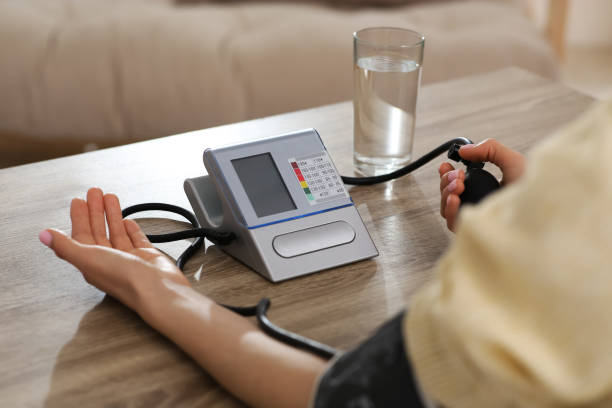The #1 Rated Blood Sugar Formula
Pulmonary hypertension

What is pulmonary hypertension?
Pulmonary hypertension (PH) is a disease characterized by abnormally high blood pressure in the small pulmonary arteries, which impedes the flow of blood to the lungs. To compensate, the right ventricle of the heart, which sends blood to the lungs for reoxygenation, must work harder. When it can no longer do so, breathing difficulties on exertion appear. At an advanced stage, the patient may develop heart failure, which is fatal in the short term if not managed.Causes
Pulmonary hypertension may or may not be associated with a variety of conditions, including cardiovascular or pulmonary. Specialists distinguish five forms of the disease involving different mechanisms, corresponding to different causes.Group 1:
pulmonary arterial hypertension, or PAH. This rare and severe disease can be fatal in a few years. It is due to remodeling of the pulmonary artery wall, leading to its thickening. It often occurs without an identified cause (idiopathic PAH) or in a hereditary context (familial PAH), but can also be related to certain diseases such as congenital heart disease or HIV infection. It can also be induced by drugs or toxins.Group 2: pulmonary hypertension due to left heart disease.
Group 3:
Pulmonary hypertension associated with respiratory disease and/or hypoxia (lack of oxygen supply to the tissues). It results, for example, from chronic obstructive pulmonary disease (COPD), sleep-disordered breathing or developmental abnormalities.Group 4:
Pulmonary hypertension related to chronic thromboembolic disease. This is caused by blockage of the vessels by a blood clot.Group 5:
other causes: sarcoidosis, tumors compressing the vessels, chronic kidney disease...Diagnosis
The diagnosis is based on a battery of tests that allow to evaluate the functioning of the heart and lungs.Cardiac Doppler ultrasound
In case of suspected pulmonary hypertension, cardiac ultrasound is performed to demonstrate elevated pulmonary arterial pressure and certain cardiac anomalies. It allows direct observation of the structures of the heart and their functioning. Coupled with the Doppler, it offers a visualization of the blood circulation.Cardiac catheterization
Cardiac catheterization is used to clarify the diagnosis. It is performed using a long flexible tube (catheter) inserted into a vein, which goes up to the heart and then to the pulmonary arteries. This test measures blood pressure in the atria of the heart, pulmonary artery pressure and blood flow. Various other tests are useful in the initial work-up:- Six-minute walk test (to assess the extent of respiratory discomfort)
- Breathing function tests
- Lung x-ray
- Electrocardiogram
- Chest scan (CT scan)
- Blood tests...
The symptoms of pulmonary hypertension
Exertional dyspnea (shortness of breath on exertion) Pulmonary hypertension is expressed as shortness of breath on exertion. At the beginning, the respiratory discomfort appears during a slightly sustained effort (climbing stairs...). Then the physical activities of the daily life become difficult, and soon the breath comes to miss at the least movement. This breathlessness can cause discomfort (dizziness, vertigo...). Fatigue Affected people are very tired because of the poor oxygen supply to the blood. As the disease progresses, various other symptoms may appear: edema of the feet and ankles (related to the development of right heart failure) a feeling of tightness in the chest heart rhythm disturbances, palpitations cough (rarely bloody)...Treatment of pulmonary hypertension
Pulmonary hypertension requires lifelong follow-up. Pulmonary hypertension requires lifelong follow-up. The therapeutic strategy is based on the treatment of the cause. In the absence of an identified cause, the prognosis is poor because there is no curative treatment. However, thanks to significant progress in recent decades, various treatments now make it possible to alleviate the symptoms of the disease and slow its progression.Oxygen therapy
Oxygen supplementation improves symptoms associated with poor blood oxygenation.Therapeutic education and lifestyle adaptation
Physical activity
Limiting physical activity is necessary: sports that cause symptoms of the disease should be avoided. However, regular, low-intensity activity such as walking, adapted to the severity of the disease, can be beneficial.Diet and lifestyle
A salt-free or low-salt diet is generally implemented to combat the problems of pulmonary and lower limb edema. Smoking cessation helps to improve lung function in general, which helps to reduce the symptoms of the disease.Situations to avoid
Stays at high altitudes are strongly discouraged because of the reduced oxygen content of the air. Pregnancy is contraindicated, as well as unnecessary surgical interventions, as they are likely to brutally aggravate the cardiac problems.
Maja Kowalczyk is a health enthusiast and has been interested in healthy and natural methods of regulating blood pressure for many years.






